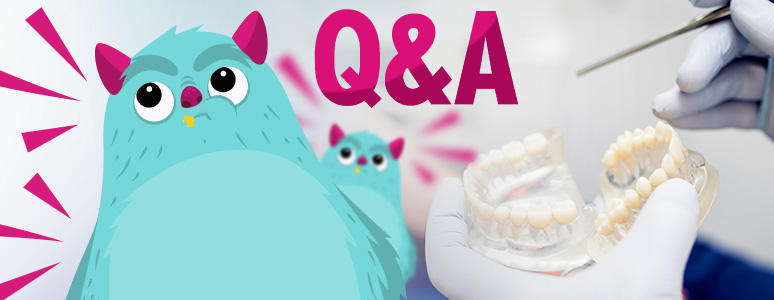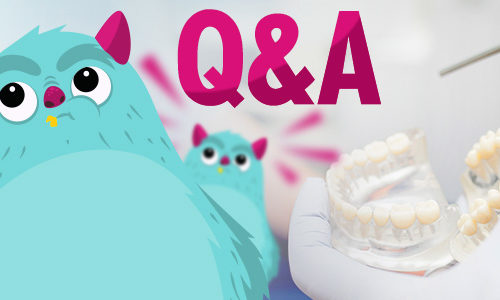
Dislocated Jaw – Symptoms, Tretment Fix, Surgery, Causes From Yawning, X-ray
A dislocated or broken jaw is a serious medical condition often resulting from facial trauma, like a physical assault, accidents, or even during a dental procedure. It involves injury to the lower jaw (mandible) and can affect the temporomandibular joint (TMJ), which connects the jaw to the skull. Understanding the nuances of such injuries, their treatment, and the recovery process is crucial for effective management.
Key Facts
- A dislocated jaw occurs when the mandible (lower jaw) is moved out of its normal position
- It can be a painful condition that affects the ability to speak and eat
- It is different from a broken jaw which involves a fracture of the bone
- This condition is a medical emergency and requires prompt treatment
- It is usually caused by trauma to the face or excessive opening of the mouth
- Treatment usually involves repositioning the jawbone, pain relief, and sometimes surgery
What Is a Dislocated Jaw? Understanding Jaw Dislocation and Fractures
The TMJ is a pivotal joint in jaw movement and function. A dislocated jaw, or TMJ dislocation, medically known as temporomandibular joint dislocation, occurs when the lower jawbone moves out of its correct position at the joint TMJ so that it is dislodged from its normal position at one or both of the temporomandibular joints. These joints are situated just in front of each ear and connect the lower jaw (mandible) to the skull. A dislocation can result in the jaw moving to one side or being unable to close properly. This condition can cause significant jaw gpain and discomfort and requires immediate medical attention. A broken or dislocated jaw, or a fractured jaw, refers to a break or crack in the mandible.
What Are The Symptoms? Recognizing a Dislocated or Broken Jaw
Symptoms of a dislocated or broken jaw include severe jaw pain, abnormal bite, inability to chew solid food or open the mouth wide, and sometimes, lost teeth. A fractured jaw might present as a minor fracture or, in more severe cases, as multiple fractures or severe breaks.
In this condition you might experience one or more of the following symptoms:
- Severe pain in the jaw area
- Inability to close the mouth – the jaw may feel as if it is stuck
- Misaligned teeth – the upper and lower teeth may not align as they normally do
- Jaw moving to one side or a crooked appearance
- Swelling, bruising, or tenderness around the jaw area
- Difficulty speaking or swallowing
- Increased salivation or drooling
- Numbness or tingling in the lower lip or chin
What Events Can Cause Dislocated Jaw?
Facial trauma is a common cause of a broken or dislocated jaw. This can include physical assault, sports injuries, vehicle accidents, or falls. Even a dental procedure can inadvertently lead to temporomandibular joint disorder (TMD) or jaw injuries.
This condition is often caused by:
- Trauma or Injury: Any form of blunt trauma or force to the jaw can cause it to dislocate. This might include a punch, a fall, or an accident.
- Excessive Opening of the Mouth: In some cases, the jaw can dislocate when it is opened too wide. This can occur during dental procedures, while yawning, or while eating something large.
- Weak Temporomandibular Joints: Some individuals have inherently weak or hypermobile joints, which makes them more susceptible to a dislocation of the jaw.
- Previous Dislocations: If you have had a dislocated jaw in the past, the ligaments that support the temporomandibular joint may have been stretched, increasing the likelihood of future dislocations.
Understanding the symptoms and causes is essential in seeking timely treatment and managing the condition effectively. The next chapters will cover the diagnosis, treatment, and prevention of dislocated jaws.
Medical Examination and Diagnosis: How Do Healthcare Providers Diagnose Jaw Dislocation?
A thorough physical exam, often including imaging like X-rays, is necessary to diagnose the extent of the injury. This helps in distinguishing between a simple mandibular dislocation and more severe fractures.
When you visit a healthcare provider with symptoms that suggest a dislocated jaw, the following steps are typically taken to diagnose the condition:
- Medical History and Physical Examination: The healthcare provider will ask you about the circumstances leading up to the injury, your medical history, and if you have had any previous incidents of jaw dislocation. During the physical examination, the provider will inspect your jaw for signs of misalignment, swelling, and tenderness.
- Imaging Tests: X-rays are commonly used to confirm the diagnosis of a dislocated jaw and to rule out fractures. In some cases, a CT scan may be required for a more detailed view, especially if there are concerns about associated injuries or if the dislocation is complex.
- Assessment of Range of Motion: The healthcare provider may also evaluate the range of motion of your jaw to understand the severity of the dislocation.
Treatment Options: How Do Healthcare Providers Treat a Dislocated Jaw?
The treatment aims to reposition the jaw back into the joints and alleviate pain and discomfort.
The following are common treatment options:
- Immediate Medical Attention: Any suspicion of a broken or dislocated jaw warrants immediate medical attention. Delay in treatment can lead to complications and increased risk of future pain or dysfunction.
- Manual Reduction and Surgical Repair: For a dislocated jaw, manual reduction by a skilled professional, often under general anesthesia, is usually the first line of treatment. Severe fractures or cases where the jaw moves out of place might require surgical repair.
- Use of Medications: Pain management is a crucial aspect of treatment. Pain relievers and muscle relaxants can be prescribed to alleviate pain and reduce muscle spasms that might be complicating the dislocation.
- Bandaging and Restriction: After the jaw has been repositioned, it may be necessary to use bandages to keep the jaw in place and restrict movement temporarily.
- Surgery: In cases where manual repositioning is not possible or when there are recurrent dislocations, surgery might be considered to repair or tighten the ligaments around the joint or to address any structural issues.
- Physical Therapy: After the initial treatment, physical therapy might be recommended to strengthen the jaw muscles and to restore the range of motion.
- Dental Considerations: Lost teeth or an abnormal bite due to jaw injuries often necessitate a visit to an oral surgeon or maxillofacial surgery specialist. In some cases, the lower jawbone may need to be wired shut to ensure it heals in the correct position.
Can I Prevent Dislocated Jaws?
Preventing a dislocated jaw involves taking steps to protect the jaw from injury and being mindful of the range of motion.
Here are some tips:
- Use Protective Gear: If you are involved in contact sports or activities where there is a risk of facial injury, use protective gear such as mouthguards or helmets.
- Avoid Excessive Jaw Movements: Be cautious while yawning or eating large foods. If you have had previous jaw dislocations, be especially mindful of not opening your mouth too wide.
- Address Underlying Joint Issues: If you have a known condition that makes your joints more lax or if you have had previous dislocations, consult with a healthcare provider for advice on exercises or treatments that might reduce your risk of dislocation.
- Regular Dental Check-Ups: Regular dental check-ups can also help in identifying and managing any conditions that might contribute to a dislocated jaw.
Knowing how to prevent, recognize, and seek treatment for a dislocated jaw can help in minimizing the impact of this condition on your quality of life. It’s crucial to seek medical attention if you suspect a dislocated jaw.
What Can I Expect If I Have This Condition?
If you have a dislocated jaw, you can expect some degree of pain, difficulty in moving your jaw, and possibly trouble speaking or swallowing. Once the jaw is repositioned, you may experience relief from the intense pain, but some discomfort might remain for a few days or even weeks. It’s also common to have some swelling and tenderness in the jaw area.
It’s important to follow the healthcare provider’s instructions for care and possibly adjust your eating habits to softer foods temporarily. There might be restrictions on the movement of your jaw for some time to allow the ligaments to heal.
Recovery and Aftercare: How Do I Take Care of Myself After Dislocation of the Jaw?
After your jaw has been repositioned, self-care is crucial for recovery.
Here are some steps to take:
- Follow Medication Guidelines: Take pain relievers or any prescribed medication as directed by your healthcare provider.
- Diet and Nutrition: During the recovery phase, which can last from four to eight weeks or at least six weeks for more severe injuries, patients are advised to eat soft foods or be on a restrictive diet. This may include diet soda, drink milk, or consume easily digestible items like canned meat to maintain nutrition without straining the jaw. Opt for a soft diet and avoid wide opening of the mouth while eating. Chew gently and avoid hard, crunchy, or chewy foods.
- Cold Compress: Apply an ice pack to the jaw area to reduce swelling and numb the pain. Do this for the first 24 hours, then switch to warm compresses if needed.
- Rehabilitation and Jaw Exercises: If recommended by your healthcare provider, perform gentle jaw exercises to strengthen the muscles around the jaw. Physical therapy and exercises may be recommended to reduce swelling, restore function, and prevent TMJ disorder in the long term. Use of safety equipment during sports or physical activities is also advised to prevent future injuries.
- Oral Hygiene: Maintain oral hygiene by gently brushing your teeth. Avoid vigorous rinsing or spitting.
- Avoid Strenuous Activities: Refrain from activities that could put strain on your jaw, especially in the first few days following treatment.
- Preventing Future Dislocation: Patients with a history of TMJ dislocation are at increased risk for future dislocation. They may be advised to avoid opening their mouth widely or engaging in activities that could cause additional strain on the jaw joint.
- Follow-Up Care: Regular follow-ups with a healthcare provider are essential to ensure the jaw heals successfully and to monitor for any signs of complications.
When Should I See My Healthcare Provider or Go to the Emergency Room?
It’s important to seek medical attention immediately if you suspect a dislocated jaw, as this is considered an emergency. If you experience intense pain, inability to close your mouth, or if your jaw is visibly out of alignment, go to the emergency room.
After initial treatment, if you experience increasing pain, difficulty in breathing or swallowing, or signs of infection such as fever, contact your healthcare provider or return to the emergency room.
Bottom Line
Broken or dislocated jaw is a significant medical condition that requires prompt and appropriate medical help. From the initial medical attention and potential need for surgical repair to the recovery phase with its dietary adjustments and rehabilitation, each step is crucial in ensuring a full recovery. Proper self-care following the repositioning of the jaw is crucial for recovery. Adhere to the advice and instructions of your healthcare provider, and don’t hesitate to seek further medical attention if complications arise. Understanding these aspects helps patients navigate their treatment and recovery journey more effectively, reducing the risk of long-term complications.
This article is complete and was published on July 9, 2023, and last updated on December 29, 2023.



